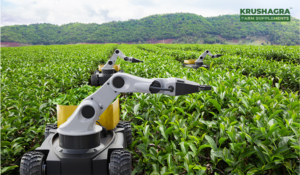Introduction:
In the quest for sustainable agriculture and forestry practices, biofertilizers have emerged as a beacon of hope. As the global population burgeons, the demand for food and timber has soared, putting immense pressure on conventional farming and forestry methods. In this context, biofertilizers have gained prominence for their pivotal role in promoting ecological balance, enhancing soil fertility, and ensuring long-term sustainability.
Biofertilizers are living organisms, predominantly bacteria, fungi, and algae, that augment the nutrient availability in the soil by facilitating nutrient mobilization and uptake by plants. Unlike chemical fertilizers that often come with environmental repercussions, biofertilizers offer a sustainable and eco-friendly alternative. The two main types of biofertilizers are nitrogen-fixing and phosphate-solubilizing biofertilizers.
Role in Agriculture:
- Disease Suppression:
Biofertilizers contribute to the suppression of soil-borne diseases by promoting the growth of beneficial microorganisms. Certain strains of bacteria and fungi present in biofertilizers produce antibiotics and enzymes that inhibit the growth of harmful pathogens, thereby protecting crops from diseases. This natural defense mechanism reduces the reliance on chemical pesticides, fostering a more ecologically balanced and sustainable farming environment.
- Enhanced Nutrient Absorption:
Beyond nitrogen fixation, biofertilizers also enhance the absorption of other essential nutrients by plants. Mycorrhizal fungi, for instance, form symbiotic relationships with plant roots, extending their reach into the soil and facilitating the uptake of nutrients like phosphorus, potassium, and micronutrients. This heightened nutrient absorption results in healthier and more resilient crops, ultimately contributing to increased agricultural productivity.
- Improved Soil Fertility:
Biofertilizers foster a symbiotic relationship between microorganisms and plant roots, creating a conducive environment for nutrient exchange. This symbiosis enhances the overall fertility of the soil, promoting healthier plant growth and increased crop yields.
- Reduced Environmental Impact:
Unlike chemical fertilizers that can lead to soil degradation, water pollution, and harm to non-target organisms, biofertilizers are environmentally benign. They reduce the carbon footprint associated with conventional agriculture and mitigate the adverse effects on biodiversity.
- Cost-effectiveness:
Biofertilizers offer a cost-effective solution for farmers, as they can reduce the reliance on expensive chemical fertilizers. Moreover, the sustainability and long-term benefits of biofertilizers contribute to the economic viability of agriculture.
Role in Forestry:
- Afforestation and Reforestation:
In forestry, biofertilizers play a pivotal role in afforestation and reforestation efforts. By enhancing soil fertility, they accelerate the growth of saplings and ensure the success of tree plantation programs, critical for combating deforestation and climate change.
- Soil Rehabilitation:
In areas where soil degradation has occurred due to unsustainable logging or other anthropogenic activities, biofertilizers aid in soil rehabilitation. They rejuvenate the soil, preparing it for future tree planting initiatives and restoring the ecological balance.
- Biodiversity Conservation:
Biofertilizers indirectly contribute to biodiversity conservation in forestry ecosystems. By promoting sustainable and natural growth processes, these living organisms help maintain a diverse range of plant species. This, in turn, supports various forms of wildlife that depend on specific plant species for food and habitat. The preservation of biodiversity is critical for the overall health and resilience of forest ecosystems.
- Carbon Sequestration:
In forestry, biofertilizers play a role in enhancing carbon sequestration. As trees and plants grow, they absorb carbon dioxide from the atmosphere and store carbon in their biomass and the soil. Biofertilizers contribute to robust plant growth, ensuring that more carbon is sequestered and stored in the forest ecosystem. This aspect aligns with global efforts to combat climate change by mitigating the levels of atmospheric carbon dioxide.
Conclusion:
The multifaceted role of biofertilizers in agriculture and forestry extends beyond the enhancement of soil fertility. From disease suppression and improved nutrient absorption in agriculture to biodiversity conservation and carbon sequestration in forestry, biofertilizers emerge as versatile allies in the pursuit of sustainable practices. As we continue to grapple with the challenges of feeding a growing population and mitigating environmental degradation, integrating biofertilizers into mainstream agricultural and forestry practices becomes not just a choice but a necessity. By harnessing the potential of these living agents, we can build resilient ecosystems, ensure food security, and contribute to a more sustainable and balanced planet.






